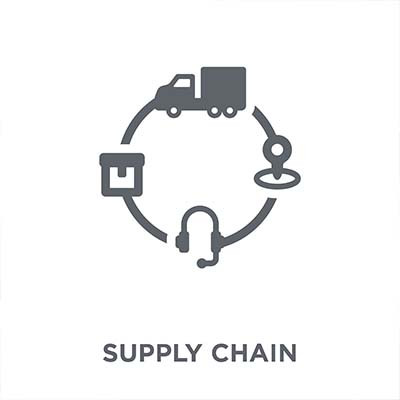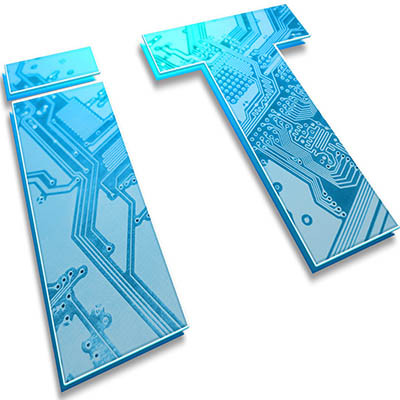With so many devices connecting to the Internet, it’s natural that a term would emerge for devices that don’t typically have Internet connection, but nowadays do anyway: the Internet of Things. Businesses can leverage the IoT to take advantage of incredible benefits, but these devices come with an inherent security risk. Why does the IoT matter for businesses, and what can you do to keep your organization secure?
k_Street Consulting, LLC Blog
Do you want superhuman productivity? Thankfully, it doesn’t take much to be more productive than the majority of workers out there, and a couple of small tweaks to your day can make a world of difference. Today, we’ll cover some strategies you can use for prioritization, time management, and focus, allowing you to get more work done.
Using AI is all the rage these days. Seemingly every opportunity software developers have to add some type of AI or machine learning technology into their offerings is being taken; not only for the benefits that it gives their customers, but also for the marketing clout it immediately provides. This month, we thought we’d go into some of the ways AI is helping create more dynamic software and if it really provides end user value or if it’s kind of a red herring used by developers to position their products better in a more competitive market.
Your business requires you to make certain compromises. Still, when it comes to building a network of vendors that can help you realize your goals, you have to take some time and carefully select the people you want to have long-lasting relationships with because constantly changing vendors can cause plenty of problems for you. In this month’s newsletter, we discuss how to get the most out of your vendor relationships.
It can be difficult staying productive with all the things that happen day-in and day-out around your business. When your team is productive, it helps you stay focused and organized, and it can make a big difference in how successful you are. This week we break down just how keeping productivity levels high can make or break a business.
Technology allows businesses to leverage high-impact practices, but only if that technology works the way it’s supposed to. Even simple issues with network connectivity problems, outdated technology, and cybersecurity can impact operations. The key to a successful technology deployment is understanding where potential disruptions could occur and taking measures to proactively address them ahead of time.
Your business works with a lot of vendors. Each of these vendors requires your time, energy, and resources. Do you have the assets to handle all of them yourself, or would it all be better spent elsewhere on more profitable tasks and projects? Today, we’ll highlight your business’ vendor management options.
Many organizations have become reliant on cloud computing due to its cost efficiency and accessibility to computing resources. However, complications with data security often arise. One way to gain control and maintain accessibility is to use a private cloud. This article explores why a business might choose a private cloud over more affordable public cloud platforms.
A business has to have people who know how to balance its spending to cover its bases and keep the company healthy. For the small business it is often a matter of choices. In this month’s newsletter, let’s go through some of the ways that keeping it simple might just be the best strategy in terms of their technology.
There’s no doubt that data is valuable. It can improve many different aspects of a business, most notably operations, customer relations, and marketing. The more data you have, the more specific actions you can take to improve your business. But it can also be a real problem if you don’t have a plan for managing it. Let’s discuss some problems your data can present and how to avoid them.
Your business needs IT expertise, regardless of how much it is integrated into your operations. You need someone on staff who not only understands your technology, but someone who can help you make the most of it to get the leg up on competition. Today, we want to explore how you can hire the right IT professionals for your organization’s specific needs, including both hard and soft skills.
Productivity is the measure of which an employee and a business is judged by, and for that reason, when productivity starts to lapse at an individual or organizational level it needs to be addressed immediately. In today’s blog, we’ll go through some of the problems that an organization can see when productivity drops.
No matter your industry, size, or business model, satisfying your customers is crucial. Your business' survival depends on your ability to do this effectively.
To achieve this, it is essential to leverage every opportunity to deliver for your audience. One way to do this is through modern business technology, such as customer relationship management (CRM). Let's explore what a CRM is and why it's beneficial.
Adversity is an inevitable part of doing business. Every administrator, manager, and employee will face challenges at some point. Overcoming these obstacles is crucial for maintaining efficient operations and fostering a resilient work environment. Here are some effective strategies to help you navigate adversity in business.
Do you have trouble keeping up with your email inbox? You’re not alone; business professionals all over the world struggle to get to the fabled “inbox zero.” If you want to change the way you manage your inbox for the better, you should consider the RAD method. It might just change your life.
The proposed ideas here come from Nick Sonnenberg, founder and CEO of Leverage.
Fringe technology encompasses innovative and unconventional tech solutions that are not yet mainstream but can potentially make a significant impact. Small businesses can utilize these technologies to gain a competitive edge, boost efficiency, and enhance customer experiences. Here are some examples of fringe technologies that small businesses can adopt.
Big data has become an invaluable asset, not just for large corporations but also for small businesses. Using the vast amounts of data your business creates to help you make more effective decisions is easier than ever. In this month’s newsletter, we’ll look at how small businesses are tapping into the power of big data:
Every business is looking to technology to enhance their ability to support their operations and provide a better customer experience. Maximizing the value you get from your technology involves a combination of optimizing usage, staying updated, and using the tools and resources you’ve chosen efficiently. Here are some strategies:
Many business owners considered allowing their employees to work from home like opening Pandora’s box; once opened, there was no going back. Unfortunately, for these administrators, they were faced with the very real prospect of losing their business if they didn’t allow it. Millions of people started working from home in 2020 as a result of the COVID-19 pandemic, but now that public fear has diminished, how have companies reacted? Let’s discuss some remote work statistics to get an answer.
Technology frustrations can cause major setbacks for today’s businesses. IT challenges of all kinds can disrupt operations and impact productivity. Fortunately, managed IT services can help solve these common business IT headaches. Therefore, businesses can access a team of experts ready to tackle these issues head-on by outsourcing their IT management to a managed service provider.
As necessary as technology is in modern business operations, a variety of common IT-related obstacles must be overcome for your efforts to succeed. Fortunately, partnering with a managed service provider (MSP) can make these obstacles less “mountain” and more “molehill.” Let’s examine some of the most often seen business technology challenges and discuss how a relationship with an MSP helps alleviate them.
Most businesses need to confront IT innovation, as technology moves pretty fast. If you don’t have a plan to at least consider the technology, you could be easily left in the dust. In this month’s newsletter, we will discuss some pretty transformative technologies that are evolving quickly and can help your business improve its overall innovation.
One of the biggest signs that your business is doing well is that it is growing. When it starts to grow, you might notice that your office suddenly feels a little cramped. While moving an office can be stressful, it is often necessary to ensure that your company can continue to flourish. From an IT perspective, it can be even more challenging.
Effective teamwork is indispensable for business success. Collaboration stands out as an extremely important consideration, yet devising a strategy that expedites project completion and enhances service delivery poses challenges. This week, we get into modern collaboration practices and how technology can help you improve collaboration.
The web is filled with all types of content, and depending on where you live, it can be regulated by a myriad of organizations from all sections of society. From internationally recognized trade organizations to governments to industry regulators, there are a lot of moving parts in data regulation as it now stands. That leads to people wanting more control over data and censorship. Let’s take a look at cyber censorship and how it's a bigger issue than you might think.
There are certain unspoken rules of doing business, one of which is that technology allows for innovation in various capacities to the point of making older, more traditional ways of doing business obsolete. If you properly use technology, you can improve your business' operations. Let’s look at three ways technology drives innovation in the business world.
Opening a new location is an exciting event for any business, but it's not without a litany of difficult decisions to make. One thing is certain, challenges always emerge. One thing you can do is plan your technology needs strategically to avoid headaches in that arena. Today, we take a look at how to best get your new location outfitted with the technology it needs to succeed.
Cybercriminals are always looking for new ways to trick users and businesses into falling for their traps. With cyberthreats on the rise, and online risks becoming more detrimental to businesses, it’s definitely something that all businesses need to have protections in place for.
A new attack involves ransomware being disguised as some of the most prominent business-related software tools.
Security is a hot topic among businesses, especially where technology and data are concerned. If you want to ensure that you are doing all you can to protect the important assets and customer data on your infrastructure, you’ll want to work with a managed service provider who can offer all the services you need to make security a top priority. Here are just a few of them.
Technology is undeniably important for the future success of your business, but one thing that is continuously overlooked is if the technology that you bring is actually right for your business. Today, we will look at some of the technology that businesses use that can actually have a negative effect on your business’ effectiveness.
The State of Maine in the United States has been the victim of a cyberattack.
That’s right, the whole state was hacked by a Russian hacking collective.
The state claims that over 1.3 million people’s personal information was compromised via an already known vulnerability in secure transfer service MOVEit Transfer. Unfortunately for the people of Maine, this vulnerability is known to be used by the Cl0p ransomware gang, based out of Russia.
Successful businesses often need to adapt to changing market conditions, consumer preferences, and industry trends. This means that they have to not only understand their business, but they also need to stay open to making innovative changes. Let’s look at six examples of changes that the average business may need to make to remain successful.
Businesses are relying on technology more and more. As they implement more technology, controlling their support costs is important for any organization if they plan to manage their budget effectively. With between three and six percent of a business’ revenue being spent on technology, going over the monthly budget can have negative effects on your business’ ability to spend elsewhere.
Business continuity is a tricky beast, and one that is best fought with proactive and preventative measures. The reason for this is simple: any situation where your business’ data is put at risk could mean the end, and we are not catastrophizing when we say that. Let’s look at two issues that are only small problems at the surface level, but could snowball into serious problems.
Managing your business efficiently requires judicious allocation of limited resources, encompassing budget, time, and the capabilities of your workforce. It is paramount to ensure their effective management. Let's delve into fundamental practices that can help you optimize the resources at your business' disposal.
When it comes to running a business, it's not a single task but a web of interconnected responsibilities that collectively determine its efficiency. For smaller businesses, this web can feel even more intricate, demanding more from their limited workforce. This month, we want to shed light on the substantial impact that even modest technological investments can have on a business's operations.
Businesses that don’t leverage managed services for their technology infrastructure are leaving a lot of money on the table, but it’s not always easy to see until you break down what the solutions really do for you. In isolation, they might not seem valuable, but when combined, they save your business significant amounts of capital.
Without hardware, where would your business be right now? You can’t run your mission-critical applications and software without devices to host them on. You need to do all you can to ensure it stays in a proper state, but there will always eventually come a time when you cannot sustain it any longer and need to upgrade.
Here’s what you need to know about your hardware refresh cycle, including what it is, what you can do with one, and how to plan it out.
If you want your business to grow, then you’re going to have to get used to dealing with complex problems that require complex solutions. You can implement technology to make solving these challenges easier, but at the same time, you want to be careful that the solutions you implement are not going to get in the way of productivity. Today, we want to discuss good old-fashioned bureaucracy, and how while you might not want to build it into your strategy, it will probably happen anyway.
The challenges that remote work has presented employers for the past few years are being remedied, not by a full-scale return to the office, but with hybrid work strategies. These strategies promote both the return to the office and the retention of schedule flexibility for remote-capable workers. It is a compromise that is having eye-opening results.
Small manufacturers and distributors require a completely different set of conditions than your typical small business. Most small businesses just don’t have the resources at their disposal to properly address issues that surface. One way these organizations can improve the way they perform is through the use of a logistics platform.
When you have a lot of tasks to get done, you might find yourself stressing out about the sequencing or ruminating on your circumstances. How did you let it get so bad? Why does this always happen to you? If this sounds like an everyday occurrence for your organization or your employees, we want to share three ways you can help to make things easier to manage, even when it feels like there is just too much to handle.
As helpful as technology is to optimizing what your business can accomplish, this kind of optimization relies equally on the people you have working there as well. This starts with hiring the right people, which means you first have to attract the right people. Let’s talk about how your business’ IT can help to make your business more appealing to talented potential applicants.
In recent months, publicly-accessible AI tools have ignited interest in using artificial intelligence amongst businesses, and for good reason. While these tools are very, very limited in what they can do—which we will discuss here for sure—they still show enormous potential.
However, this potential introduces a few major questions to the conversation. Let’s examine some of them.
We write in a lot of general terms about technology, whether it’s how to secure your infrastructure, procure hardware, or implement software solutions for your network, and that is for one very specific reason: each business is different and has different needs. We thought today that we would take you through some of the questions you might ask when thinking about the best approach to new technology in your office.
To sustain any type of relationship, there needs to be some open and clear communication. The worse communication is between two parties the more inefficiency there will be. Obviously, inefficiency can lead to disaster for any organization that depends on consistency so this month we thought we’d give you four ways to improve communication throughout your organization.
It was only a few decades ago that purchasing a couple of computers for a business was almost the same investment as purchasing a decent company van. In 1986, a business could spend $3500 on a single Compaq Portable II, which was a 24 lb monstrosity with a tiny 9-inch screen. Alternatively, a Chevy Astro Cargo Van cost about $7800 around the same year.
Technology is not cheap, especially not business technology that has features that the average user might not find much value in. To help you keep your business from investing in the wrong solutions or spending unnecessary capital on solutions you won’t find useful, we’ve put together some of the common places where businesses like yours might accidentally waste hard-earned funds.
Everyone’s job has some degree of minutiae involved. Not everything can be exciting: I mean even a stuntman sits around for most of the day before his or her death-defying scene happens. This week, we thought we’d go through the importance of these seemingly rote tasks and how instituting technology that allows you to automate more of them can actually help a business accomplish a lot.
Let’s say that, right now, someone was attempting to break into your network…could they do it? Is there some vulnerability present on your network that has left you open to attack? This is a question you need to know the answer to so that you can resolve it.
One way to get this answer is by bringing on a professional to perform a penetration test on your business IT.
With the COVID pandemic still affecting businesses all over the world, many are still considering remote and hybrid work operations. In fact, there are many employees who have yet to step back into the workplace in any capacity, meaning that workspaces previously well-populated are being underutilized.
The Internet of Things—the IoT—is very much a double-edged sword, insofar as it can create some very real threats just as easily as it can offer businesses considerable benefits when leveraged properly. Let’s focus on this latter point and explore the kinds of benefits that the IoT can bring to the workplace.
Nowadays, there seems to be risks at every turn that can negatively impact your business. Obviously, some are more concerning than others, but ultimately you need to find solutions to every problem you have to ensure that it can run routinely, let alone efficiently. Let’s take a look at some of the risks the average small business faces and what technology can do to help you circumvent these particular issues.
Do you know those horror stories you catch every so often where a huge business has their network hacked and millions of their customers and employees have their personal and financial information leaked onto the Dark Web? Your organization isn't likely as big as theirs, but regardless of how much money, people, and diverse revenue streams an organization has, having its network breached and its customers’, or its employees’, information strewn about over the Dark Web is not an ideal scenario.
Most things in your office depend on technology in some way. That’s just the simple fact of life these days. Let’s examine just how much of your business depends on the technology that powers it and how companies increasingly depend on IT to manage the countless devices that have permeated the office environment.
Innovation is a driving force behind business, and it has been for essentially the entirety of human existence. The pandemic has brought about an era where businesses are producing solutions that have many new features, but these features don’t necessarily enhance or add anything to the customer experience. Let’s examine how this desire to stay profitable flies in the face of true innovation and doesn’t provide useful or practical products to consumers.
Businesses are rarely successful without the ones steering the ship having the ability to make great decisions. Whether it’s managing your workforce, supporting your customers, or procuring the right equipment to best facilitate productivity, good decision making will be at the heart of any organization’s success. Let’s examine how you can make better decisions as they pertain to your technology solutions.
The pandemic forced businesses to reexamine the way that they operate, but even though the pandemic is, unfortunately, still ongoing, many have returned to conducting business as usual like they did before it began. One part of business that will not return to normal anytime soon is the supply chain, as these issues will likely persist into the future.
Companies hire many talented individuals for many different types of positions, but one way that some organizations choose to amplify their operations is through proper outsourcing. This practice can be invaluable for businesses that want to take things up a notch and adjust the way they operate for the better.
There are plenty of companies that have implemented remote work policies to combat the isolation forced upon us by the COVID-19 pandemic. Some businesses even had to resort to downsizing or shutting their doors completely because they could not adapt to these circumstances. Today, as we enter 2022, we thought we would take a look at the role security plays in an effective remote work policy.
Have you ever wondered how it is that people can build up bad habits over time, yet break them and establish better ones? Have you also noticed how difficult it can be to break habits that have been ingrained into the very fibers of our being over an extended period of time? Believe it or not, people can change, and the science behind it—neuroplasticity—can provide some valuable insights into how to make it happen.
In order to get the most value out of your business technology, it’s important to understand best practices and how they can figure into your business operations. Let’s examine some of the most effective practices that you should include in your day-to-day operations and how they can benefit your organization.
Turnover happens in the business world. It’s just a matter of when and how often it happens, as well as how your organization responds to it. If your company fails to address certain parts of the turnover process, it could have negative consequences that must be addressed. We’ve put together three ways that you can be sure former employees do not cause you trouble when they leave, particularly in regards to staffing and cybersecurity.
Technology has always been ingrained in the operations of businesses to an extent, but it was only recently (in the grand scheme of things) that standard business technology such as desktops, server units, and other computing hardware really started to take off. That said, it’s now a staple, so your organization should be making informed decisions regarding any new hardware that you implement.
There is a misconception going around that the absolute only way you can possibly take care of your organization’s technology is to hire dedicated professionals to monitor and maintain every aspect of it. There is considerable benefit to doing this, we won’t lie, but there is value in applying specific mantras from everyday life to your IT infrastructure. With these small, common-sense practices, you might see some long-term success in IT management even without professionals at the helm.
Business continuity is difficult to talk about for some business owners, specifically because no one likes to talk about the worst case scenario. What would you do if your business were to suddenly go through a disaster? Do you have a plan in place? If not, let’s talk about that. Here are some aspects of business continuity that you must consider. Remember; your company’s future depends on it!
Remote work has been a popular topic for a few years, but over the past year, with so many people forced into working from home, a lot has been written about it. Today, we wanted to briefly talk about some of the technology that is suggested for the remote business, and what we can do to help you support remote workers.
Of all the technologies currently used by businesses, the Internet is a strong contender for the most important. Regardless of their size, many businesses invest thousands each month into online Software-as-a-Service solutions as a means of more affordably equipping their users. Let’s talk for a moment about another cloud platform that has seen some advancement: Infrastructure-as-a-Service.
There is no denying that the COVID-19 pandemic has caused some major operational shifts in how most businesses conduct themselves and their processes, with many of these shifts relying on technology solutions. While there’s still no telling for certain how much longer these conditions will persist, we predict that many businesses won’t abandon these solutions once the present danger has passed. Let’s discuss why we have this expectation.
Okay, time for some real talk: There is no denying that 2020 has held a few unique challenges for everyone who runs a business. Economic challenges, political tensions, and an honest-to-goodness pandemic have all thrown us all for a loop. As a result, it is important that businesses all adjust their technology priorities to survive. Let’s discuss these priorities, and how they will need to shift.
If your procedures and policies aren’t currently documented, they need to be. A written policy and procedure guide can help keep your team up-to-speed on the expectations that you have of them. Consider it a quick and easy reference for your employees to use to answer their questions. In light of this, here’s some tips to keep in mind as you put together your business’ employee handbook.
When a budget comes into play, it is important to remember that there are a few ways that you can adjust it beyond eliminating line items. For instance, you can instead optimize some of the most egregious financial requirements your technology has--its support costs--by translating the unpredictably variable costs you likely deal with now for your support, to the much more sustainable agreement that a managed service provider will operate through.
Contracts are a huge part of doing business. The practice is as old as the legal profession. You’ll be hard pressed to complete a transaction where money changes hands where there isn’t a document outlining the specifics of the liability each party takes on by entering that financial agreement. We call them receipts, but in retail, they are a signed contract.
In 2018, Amazon was struck by a considerable attack, with hackers taking funds from approximately 100 seller accounts, according to a Bloomberg report. Between May and October 2018, Amazon sellers were struck approximately 100 times, draining funds from the seller control platform to augment their own funds. According to the investigation, the first fraudulent transaction took place on May 16, 2018, with an undisclosed amount being stolen. The hackers utilized phishing attacks in order to scam their targets.
When considering a business’ strengths, there is a tendency to focus on its more quantifiable aspects - it generates x dollars in revenue, or leverages advanced solutions a, b, and c. While these kinds of competitive advantages are valuable to have, it is also important to recognize how critical one of your more qualifiable strengths can be: your company culture.
As nice as it would be to always please everybody with your business services, it just isn’t going to happen. Sooner or later, you’re going to encounter someone who isn’t pleased, and they’re going to have the capability to do some damage to your reputation. Fortunately, there is a way you can mitigate this damage.
If you’ve read any of our content, we continually stress the importance of innovation. Learning how to adjust and do things better allows for any organization to maximize productivity. In doing so, it creates the environment needed to become a more successful business. But, can innovation actually be a productivity killer? Today we look at how innovating may not always be the best way to get your business to go where you want it to go.
While running a business can be quite rewarding on a professional level, it can be extremely challenging, with countless obstacles to overcome--particularly in regard to technology and its management. Thankfully, there are ways your business can minimize the pain of managing technology. Here are just a few of them.
Technology is an easy thing to take for granted, especially in an office that has countless solutions that are utilized on a regular basis. It doesn’t matter if you’re a small retail establishment, a large organization with multiple offices, or a factory to produce consumer items. Today, we’ll look at the various ways your business is changed for the better thanks to the use of technology.
As the technology that businesses have available to them develops, so does the propensity for this technology to be used unethically. This has become especially apparent where data collection is concerned, and what that data is used for after it has been collected. How can you keep operations moving both productively, and ethically?
Has your business moved to the cloud yet? If not, you’ve got some work to do--it’s only a matter of time before the need for the cloud completely overshadows your organization. Thankfully, it’s only challenging to move to the cloud if you don’t have a group of professional IT technicians helping you.
Smartwatch enthusiasts now have one less brand from which to select, as rival Fitbit has successfully taken over the former Kickstarter project Pebble’s business. For companies that rely on software for their mission-critical tasks, lessons learned from the end of Pebble reminds business owners that, when it comes to innovative technology purchases, there is always a bit of risk.
In a business, some jobs belong to certain people: managers make sure that work is done when it needs to be, human resources make sure the workforce is accounted for, and so on. However, some jobs belong to everyone in the modern workplace who works with technology, For our tip of the week, we’ll go over some of these shared responsibilities.
If there is one thing that supports everything a successful business does, it has to be communication. Any company relies on its communications to ensure that its clients are satisfied with their services, and as communications have improved, it has only become easier for a unified communication and collaboration, or UCC, strategy to take form.
Almost everyone has, at one time, worked with someone with whom their personality clashed, whether they did not get along or just didn’t work effectively together. While this is a perfectly natural phenomenon of both nature and nurturing, it is best to put personal differences aside when forming a professional relationship with a coworker.
Do you still rely on desktops in your office? While many organizations still use workstations almost exclusively, it has become clear that mobile devices present a certain advantage over “landlocked” devices like desktops. A recent study highlights the importance of mobile devices and the increased obsolescence of desktops.
Stress is a natural part of the workplace. It’s almost impossible to make it through the workday without getting stressed out about at least one thing or another, especially when you’re a business owner. In these stress-filled circumstances, it’s important to remember that stress isn’t always a bad thing; it has some redeeming factors that are often lost amongst the cacophony of shuffling papers and constant phone calls.





































































































